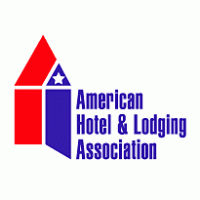American Hotel and Lodging Association
 Serving the hospitality industry for more than a century | |
| Abbreviation | AHLA |
|---|---|
| Predecessor |
|
| Formation | January 1, 1953 |
| Type | NGO |
| Legal status | Trade association |
| Purpose | Hospitality industry resource |
| Headquarters | Washington, D.C., U.S. |
| Location |
|
| Coordinates | 38°54′04″N 77°01′42″W / 38.901023°N 77.028464°WCoordinates: 38°54′04″N 77°01′42″W / 38.901023°N 77.028464°W |
Official language | English |
| Website | AH&LA |
The American Hotel and Lodging Association (formerly American Hotel and Motel Association, and before that American Hotel Association) is an industry trade group representing organizations of hotel owners. Its role at various times has included the publication of hotel directories, market research, support of standardisation efforts, public or political advocacy for the interests of hotel owners and the establishment or promotion of training programmes and facilities for hotel personnel.
Among other tasks, the American Hotel and Lodging Association operates the American Hotel & Lodging Educational Institute, which provides educational training to the hotel industry (including several textbooks used in American hospitality schools). The Institute is based in Orlando, Florida.
History
The American Hotel Protective Association, founded 1910 as a regional trade association in Chicago,[1] became the American Hotel Association in 1917. The AHA's first president, Frank Dudley, identified rapid expansion of the US hotel industry as vulnerable to a shortage of trained personnel which could not be filled by the then-common practice of recruiting European hotel workers. With the backing of Ellsworth Milton Statler and of the Federal Board of Vocational Training, the group promoted college-level training in hotel management and the creation of the Cornell Hotel School at Cornell University under dean Howard Meek.[2]
Hôteliers thrived during the Roaring Twenties; in 1928, the AHA Red Book listed 25,900 hotels with 1,525,000 rooms distributed widely across the US, with fewer hotels in the confederate South because racial segregation excluded many travellers from the facilities.[3] Properties were forced to adapt to the newfound popularity of the motorcar, adding parking and establishing locations on main highways; the number of rooms in each newly constructed hotel was increasing. Prohibition hurt the hotel trade by cutting into revenue from food and beverage operations,[4] but the Great Depression would prove disastrous for business. Overexpansion during the 1920s left excess inventory in the Depression era. The 1933 National Industrial Recovery Act, which sought to employ nationwide trade organisations to regulate wages and prices to halt a deflationary spiral, drew strong opposition from hotel owners (who saw it as a prelude to unionisation) and from the association.[5] Fewer people were travelling overall and hotels were losing market share to less expensive "tourist courts", a new pattern of small clusters of hastily constructed cabins which were the predecessors of the early roadside motels. Two out of three US hotels went into receivership.[6]
Initial attempts to include "tourist courts" in AHA's scope were doomed as the interests of the motel owners were in direct conflict with the existing hotels whose rates were being undercut by the new entrants.[7] Various motel-specific groups, such as the American Motor Hotel Association, filled this gap.
The motels were ultimately included in 1962 with AHA becoming AHMA, the American Hotel and Motel Association.[6]
Agenda
In 1952, the AHA approached Mississippi State University to operate an extension training curriculum, the American Hotel Institute.
The association also proposed that members standardise various tasks within each hotel operation, from accounting[4] to training and customer service,[8] as a means to improve operational efficiency. As early as 1928, it worked with supplier groups to advocate standardisation for tableware and porcelain china throughout the hotel.[9]
The group's stance on tipping in hotels has varied from careful neutrality in the pre-WW1 era (when unions were protesting that owners should pay their staff a fair wage instead of shifting the burden to the client)[10] to advocating clients provide generous gratuities to a long list of personnel in its 2013 Gratuity Guide.[11]
In response to complaints of overcharging for calls from in-room telephones, the association has supported the FCC's protection of a travellers' right to select which carrier provides operator services.[12]
The group does not make any recommendation for standard procedure to deal with bed bugs.[13]
AHA has supported market research to gauge user demand for specific amenities, such as fitness centres, in tourist hotels.[14]
The organisation hosts various committees, conventions and workshops. The American Hotel Association Directory Corporation, a subsidiary, published Lodging magazine and the Directory of Hotel and Motel Companies.[15]
References
- ↑ "Encyclopaedia of Tourism".
- ↑ "Hotel Mavens".
- ↑ "America's Main Street Hotels".
- 1 2 "Great American Hoteliers".
- ↑ "America's Main Street Hotels".
- 1 2 "The Motel in America".
- ↑ https://books.google.com/books?id=Ve1EFCXICbAC&pg=PA153
- ↑ "America's Main Street Hotels".
- ↑ "Standards Yearbook".
- ↑ "Tipping".
- ↑ "Hotel Mavens".
- ↑ "Report on the Activity of the Committee on Energy and Commerce for the 107th ...".
- ↑ "The Bed Bug Survival Guide".
- ↑ "The Runner's Handbook".
- ↑ "Encyclopaedia of Tourism".
External links
- "AHLA Official Website". American Hotel and Lodging Association.
